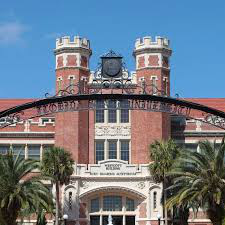Conveners
Hadron Decays: Parallel 5
- Emilie Passemar
Hadron Decays: Parallel 5
- Daniel Lersch (Florida State University)
The NA62 experiment at CERN collected world's largest dataset of charged kaon decays in 2016-2018, leading to the first observation of the ultra-rare K+ --> pi+ nu nu decay based on 20 candidates. Dedicated trigger lines were employed for collection of di-lepton final states, which allowed establishing stringent upper limits on the rates lepton flavor and lepton number violating kaon decays....
We will discuss the reach for light new physics in rare kaon and hyperon decays.
The Belle II experiment at the SuperKEKB energy-asymmetric electron-positron collider is a major upgrade of the B factory experiment at KEK in Tsukuba, Japan. With a goal of collecting 50 times the data recorded by its predecessor, Belle II has an expansive program in hadronic spectroscopy. Many early measurements have proven the capabilities of the detector. In this talk, I will review some...
A theoretical analysis of the $C\!$-conserving semileptonic decays $\eta^{(\prime)}\to \pi^0 l^+ l^-$ and $\eta^{\prime}\to \eta l^+ l^-$ ($l=e$ or $\mu$) is carried out within the framework of the Vector Meson Dominance (VMD) model. A phenomenological model is used to parametrise the VMD coupling constants and the associated numerical values are obtained from an optimisation fit to $V\to...
The Muon g-2 Experiment at Fermi National Accelerator Laboratory was designed to measure the anomalous magnetic moment of the muon, a, with a target precision of 140 parts-per-billion; a four-fold improvement over the former measurement from the early 2000s at Brookhaven National Laboratory. The experiment was motivated by the ~3.5 standard deviation between the BNL result and the Standard...
The system of light pseudoscalar meson π0, η and η' provide a unique laboratory to probe fundamental QCD symmetries at the confinement scale. While π0 and η are Goldstone bosons due to spontaneous chiral symmetry breaking, η' is not due to an axial U(1) anomaly. There is a second type of chiral anomaly driving the two-photon decays of these mesons. This system harbors information about the...
The world’s largest sample of J/ψ events accumulated at the BESIII detector offers a unique opportunity to investigate η and η′ physics via two body J/ψ radiative or hadronic decays. In recent years the BESIII experiment has made significant progresses in η/η′ decays. A selection of recent highlights in light meson spectroscopy at BESIII are reviewed in this report, including the observation...
With almost 8 fb−1, the KLOE and KLOE-2 data sample represents a
unique, physics-rich sample and the largest dataset ever sized at an electron-
positron collider operating at the φ peak resonance. It represents a collection
of about 24 billion of φ mesons, whose decays include about 8 billion pairs
of neutral K mesons and about 300 million η mesons. With this sample, the
KLOE-2...

